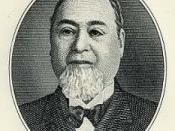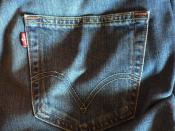Levi Strauss is the largest apparel company in the world, with annual sales of $7.1 billion in 1996. It produces and markets jeans and casual sportswear in the United States and more than 60 other countries. Thirty-nine percent of its revenues and 60% of its pretax profits came from abroad in 1990. It has successfully marketed its jeans to foreign consumers in Europe, Asia, and Latin America. It bases its success on a unique global strategy that refocuses attention on basic jeans instead of diluting efforts over a broad product line. It gives local managers sufficient discretion to adjust their tactics to local conditions. Meanwhile, headquarters managers tightly control product quality and finances and provide support in marketing, advertising, and computerized systems. The company's advertising emphasized its American youth culture roots with advanced forms of a Web banner alternative called I-Candy running at online music venues such as SonicNet's Streamland site, which offers more than 100 music videos on demand.
Basic jeans that sell for $30 in the United States are able to fetch $63 in Tokyo and $83 in Paris. Levi jeans can now be purchased off the Web from companies such as Bluejeans to be shipped anywhere in the world.
Many entry strategies are available to Levi's. Picking the right one is difficult and depends so much on the environment being headed into. Things like, governmental controls, trade barriers, workforce, as well as social and economical conditions will affect which mode is chosen. When emerging on the European market, for example, it is important to keep style as a priority because of the fashion-conscious public. The company has also orchestrated its production and distribution activities abroad to exploit advantageous labor rates. Though, this has led to criticism on occasion. It has 76 production facilities in 24 countries, including...


